Abstract
Saunders, Grady F. (University of Illinois, Urbana), L. Leon Campbell, and John R. Postgate. Base composition of deoxyribonucleic acid of sulfate-reducing bacteria deduced from buoyant density measurements in cesium chloride. J. Bacteriol. 87:1073–1078. 1964.—The base composition of the deoxyribonucleic acid (DNA) of sulfate-reducing bacteria was calculated from buoyant density measurements in CsCl. The sporulating sulfate-reducing bacteria fell into two groups: Desulfovibrio orientis with a DNA base composition of 42% guanine plus cytosine (G + C), and Clostridium nigrificans with a DNA base composition of 45% G + C. The mesophilic relative of C. nigrificans had a DNA base composition of 46% G + C. Thirty strains of nonsporulating sulfate-reducing bacteria called D. desulfuricans were studied. They fell into three groups as judged by DNA base composition: group I (11 strains), 60 to 62% G + C; group II (13 strains), 54 to 56% G + C; and group III (6 strains), 46 to 47% G + C. These data underline the need for a taxonomic revision of this group of microorganisms.
Full text
PDF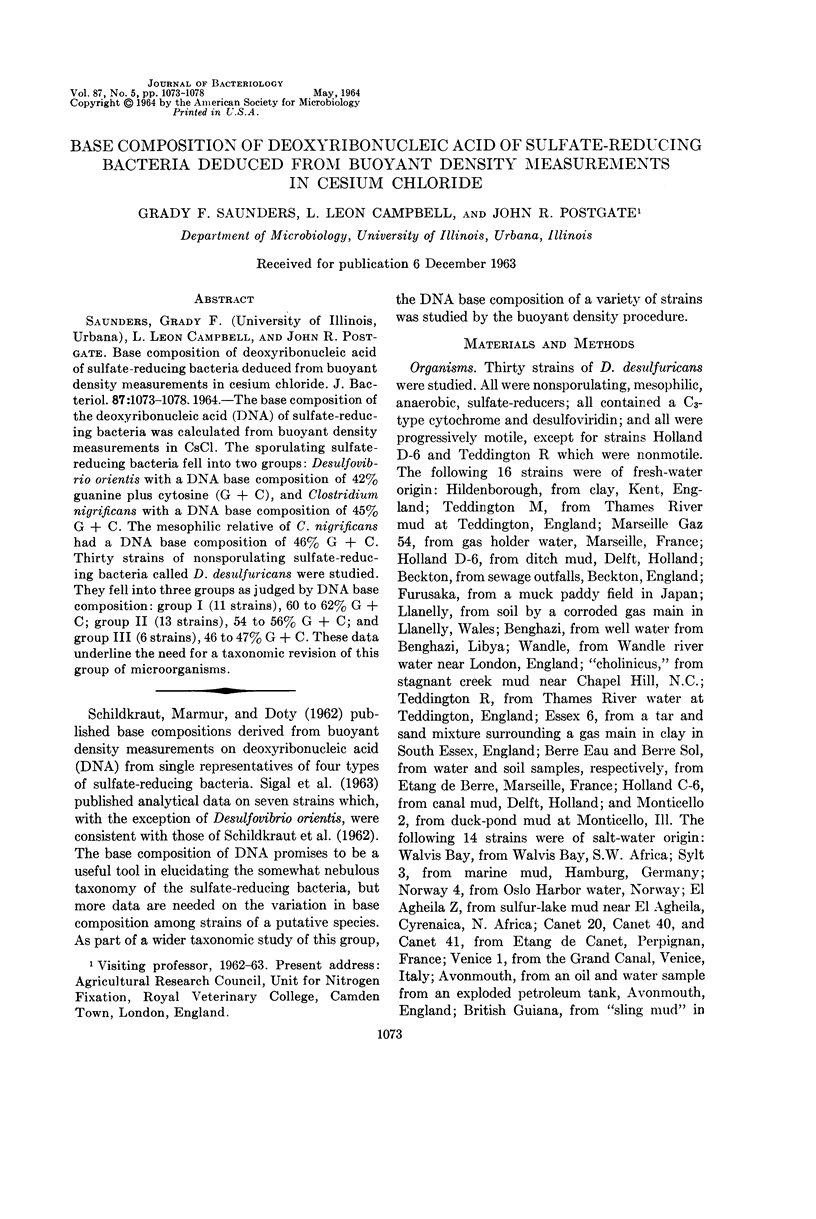
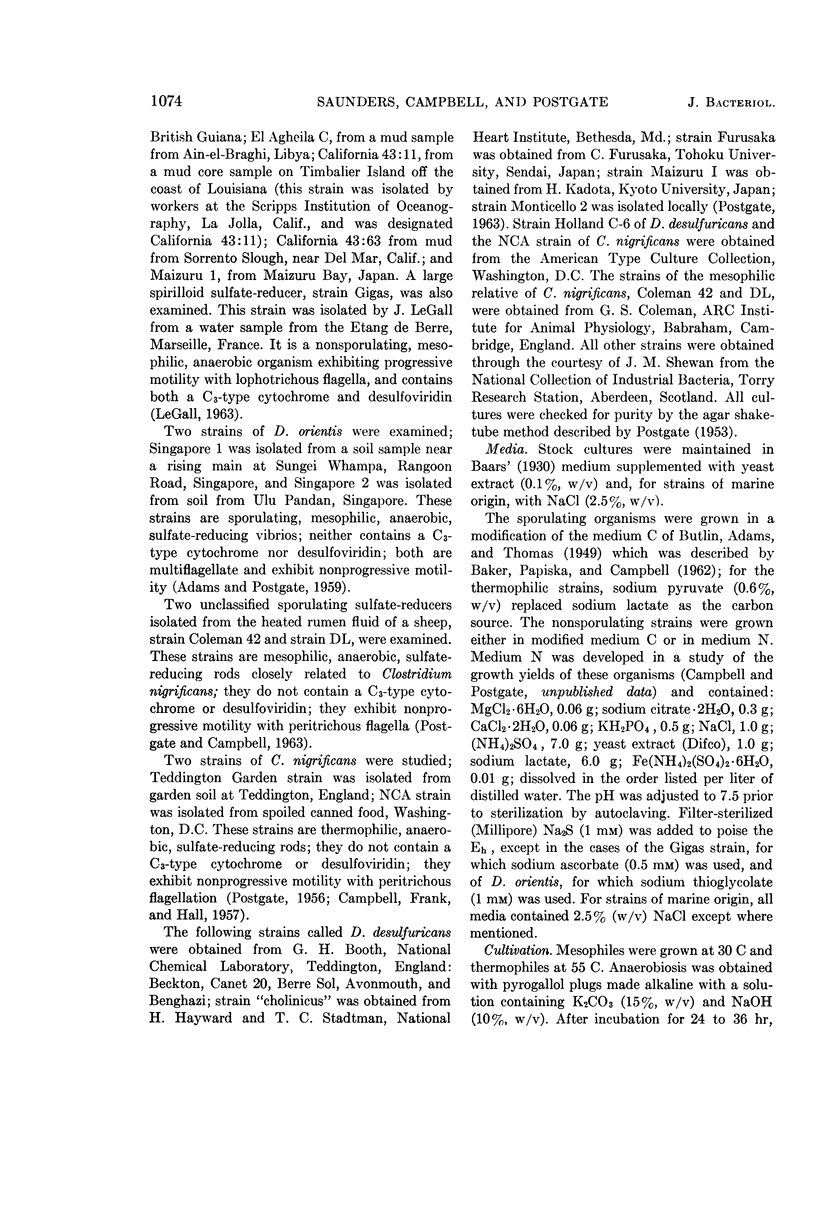
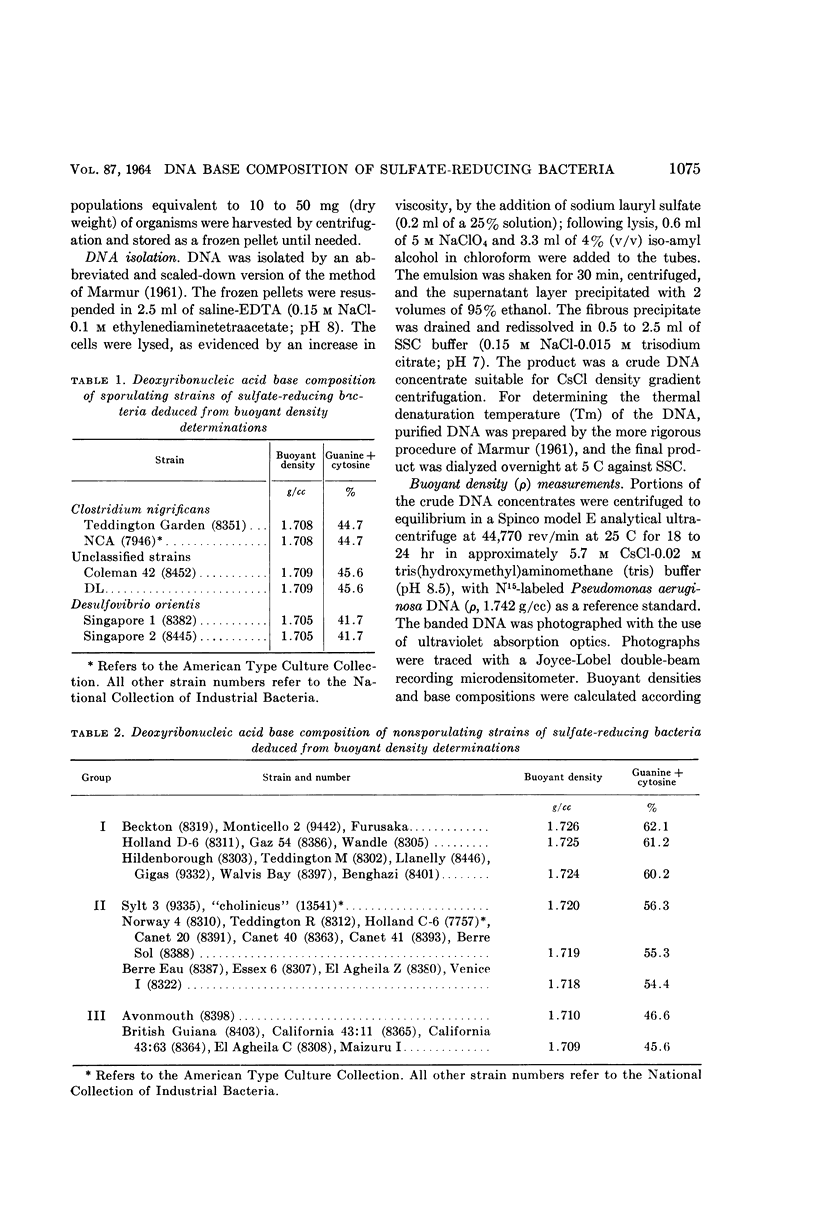
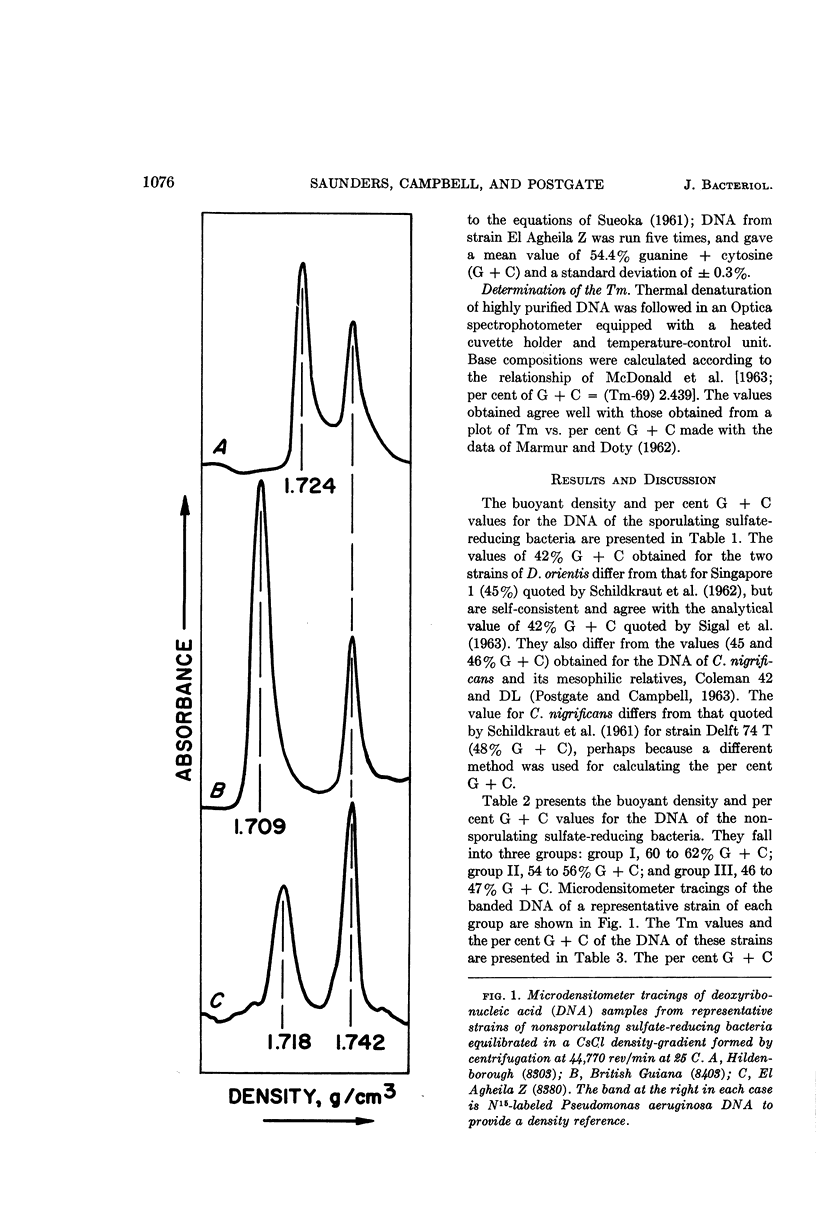
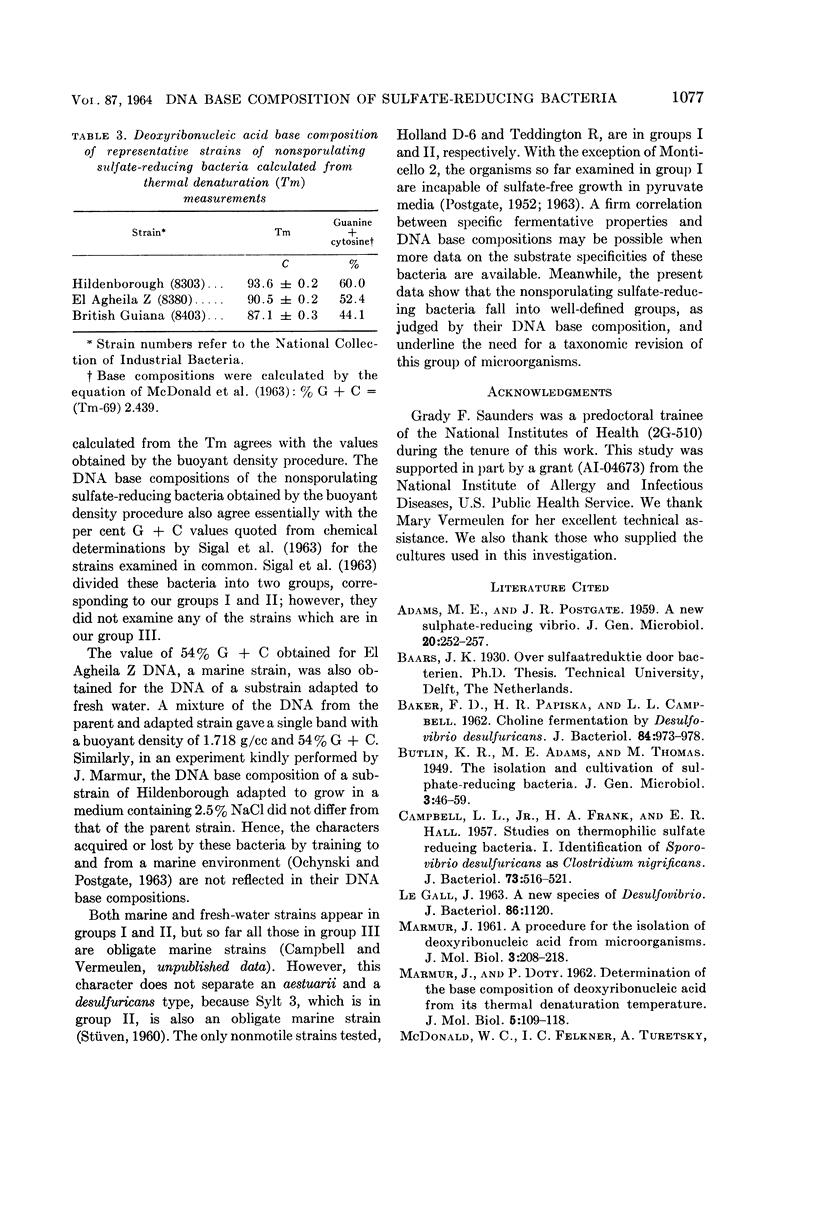
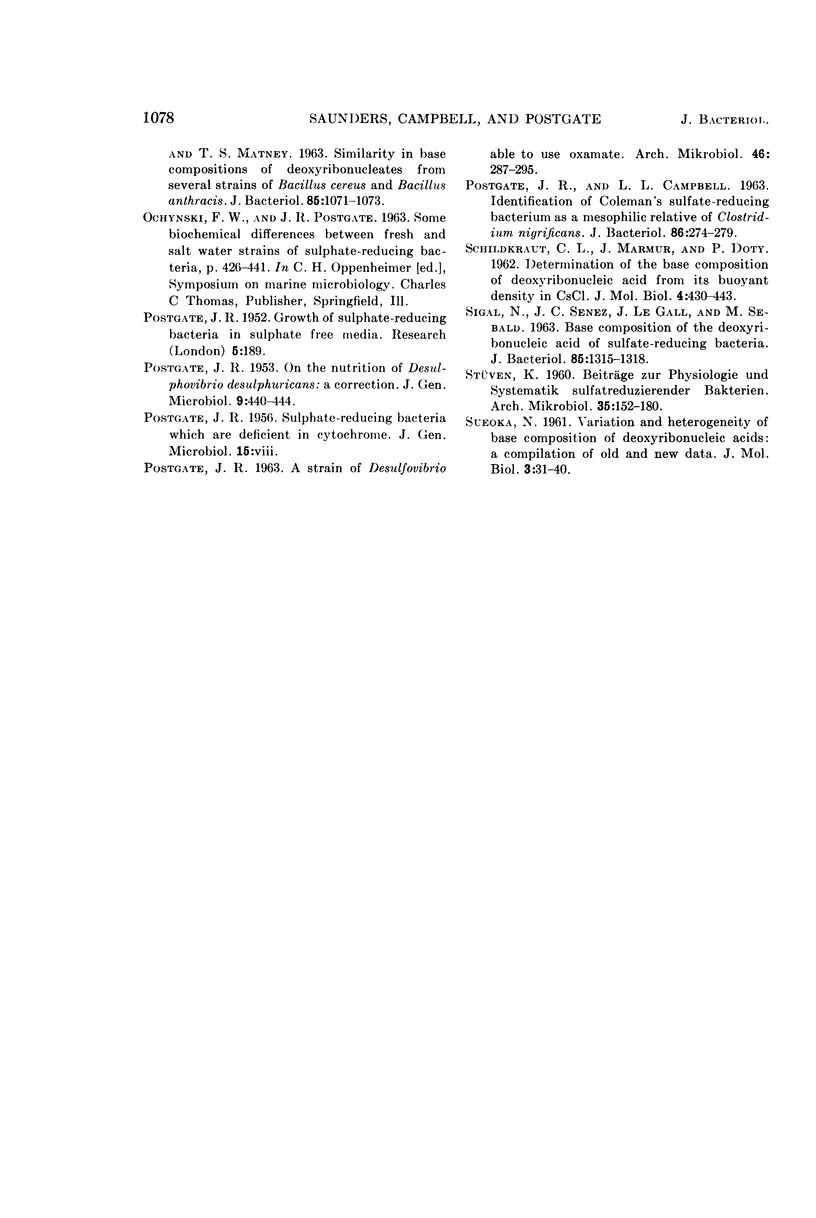
Selected References
These references are in PubMed. This may not be the complete list of references from this article.
- ADAMS M. E., POSTGATE J. R. A new sulphate-reducing vibrio. J Gen Microbiol. 1959 Apr;20(2):252–257. doi: 10.1099/00221287-20-2-252. [DOI] [PubMed] [Google Scholar]
- BAKER F. D., PAPISKA H. R., CAMPBELL L. L. Choline fermentation by Desulfovibrio desulfuricans. J Bacteriol. 1962 Nov;84:973–978. doi: 10.1128/jb.84.5.973-978.1962. [DOI] [PMC free article] [PubMed] [Google Scholar]
- CAMPBELL L. L., Jr, FRANK H. A., HALL E. R. Studies on thermophilic sulfate reducing bacteria. I. Identification of Sporovibrio desulfuricans as Clostridium nigrificans. J Bacteriol. 1957 Apr;73(4):516–521. doi: 10.1128/jb.73.4.516-521.1957. [DOI] [PMC free article] [PubMed] [Google Scholar]
- LEGALL J. A NEW SPECIES OF DESULFOVIBRIO. J Bacteriol. 1963 Nov;86:1120–1120. doi: 10.1128/jb.86.5.1120-1120.1963. [DOI] [PMC free article] [PubMed] [Google Scholar]
- MARMUR J., DOTY P. Determination of the base composition of deoxyribonucleic acid from its thermal denaturation temperature. J Mol Biol. 1962 Jul;5:109–118. doi: 10.1016/s0022-2836(62)80066-7. [DOI] [PubMed] [Google Scholar]
- MCDONALD W. C., FELKNER I. C., TURETSKY A., MATNEY T. S. SIMILARITY IN BASE COMPOSITIONS OF DEOXYRIBONUCLEATES FROM SEVERAL STRAINS OF BACILLUS CEREUS AND BACILLUS ANTHRACIS. J Bacteriol. 1963 May;85:1071–1073. doi: 10.1128/jb.85.5.1071-1073.1963. [DOI] [PMC free article] [PubMed] [Google Scholar]
- POSTGATE J. R. A STRAIN OF DESULFOVIBRIO ABLE TO USE OXAMATE. Arch Mikrobiol. 1963 Sep 16;46:287–295. doi: 10.1007/BF00422189. [DOI] [PubMed] [Google Scholar]
- POSTGATE J. R., CAMPBELL L. L. IDENTIFICATION OF COLEMAN'S SULFATE-REDUCING BACTERIUM AS A MESOPHILIC RELATIVE OF CLOSTRIDIUM NIGRIFICANS. J Bacteriol. 1963 Aug;86:274–279. doi: 10.1128/jb.86.2.274-279.1963. [DOI] [PMC free article] [PubMed] [Google Scholar]
- POSTGATE J. R. On the nutrition of Desulphovibrio desulphuricans; a correction. J Gen Microbiol. 1953 Dec;9(3):440–444. doi: 10.1099/00221287-9-3-440. [DOI] [PubMed] [Google Scholar]
- SCHILDKRAUT C. L., MARMUR J., DOTY P. Determination of the base composition of deoxyribonucleic acid from its buoyant density in CsCl. J Mol Biol. 1962 Jun;4:430–443. doi: 10.1016/s0022-2836(62)80100-4. [DOI] [PubMed] [Google Scholar]
- SIGAL N., SENEZ J. C., LEGALL J., SEBALD M. BASE COMPOSITION OF THE DEOXYRIBONUCLEIC ACID OF SULFATE-REDUCING BACTERIA. J Bacteriol. 1963 Jun;85:1315–1318. doi: 10.1128/jb.85.6.1315-1318.1963. [DOI] [PMC free article] [PubMed] [Google Scholar]


